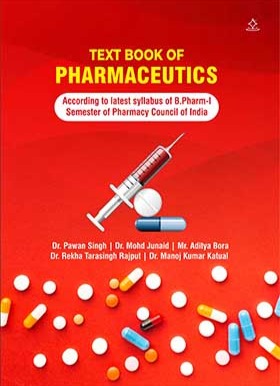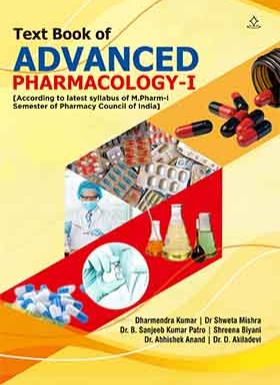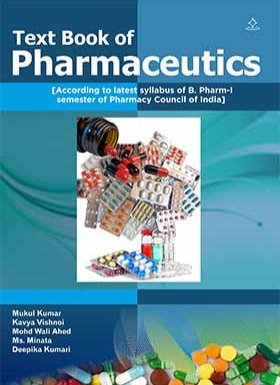


ISBN : 978-93-6087-486-5
Category : Academic
Catalogue : Medical And Nursing
ID : SB21507
TEXT BOOK OF PHARMACEUTICS
According to latest syllabus of B.Pharm-I semester of Pharmacy Council of India
Dr. Pawan Singh, Dr. Mohd Junaid, Mr. Aditya Bora, Dr. Rekha Tarasingh Rajput, Dr. Manoj Kumar Katual
Paperback
899.00
e Book
399.00
Pages : 234
Language : English
About Book
The "Textbook of Pharmaceutics" is a comprehensive guide designed to introduce students to the fundamentals of pharmaceutical sciences. Covering essential topics in pharmacy education, formulation sciences, and pharmaceutical calculations, this book serves as a valuable resource for pharmacy students and professionals. The book begins with the historical background and development of pharmacy as a profession in India, providing insights into pharmacy education, industry, and regulatory organizations. It also discusses career opportunities in pharmacy and an overview of pharmacopoeias, including the Indian Pharmacopoeia (IP), British Pharmacopoeia (BP), and United States Pharmacopoeia (USP). A detailed discussion on dosage forms provides students with basic classifications, definitions, and applications. The prescription section explains its components, handling, and common errors, while the posology chapter focuses on dose calculation techniques, including pediatric dosing. The pharmaceutical calculations chapter helps students master imperial and metric system conversions, as well as percentage solutions, proof spirit, isotonic solutions, and molecular weight calculations. The book also extensively covers powders, including classification, advantages, disadvantages, and preparation methods such as dusting powders, effervescent powders, and eutectic mixtures. Comprehensive insights into liquid dosage forms cover monophasic liquids (e.g., gargles, syrups, elixirs, lotions, liniments) and biphasic systems like suspensions and emulsions, including their preparation, stability problems, and solutions. The book further elaborates on suppositories, discussing their types, advantages, bases, displacement value calculations, and evaluation methods. A dedicated chapter on pharmaceutical incompatibilities explains physical, chemical, and therapeutic incompatibilities, supported by practical examples. The final section focuses on semi-solid dosage forms, their c
Customer Reviews





